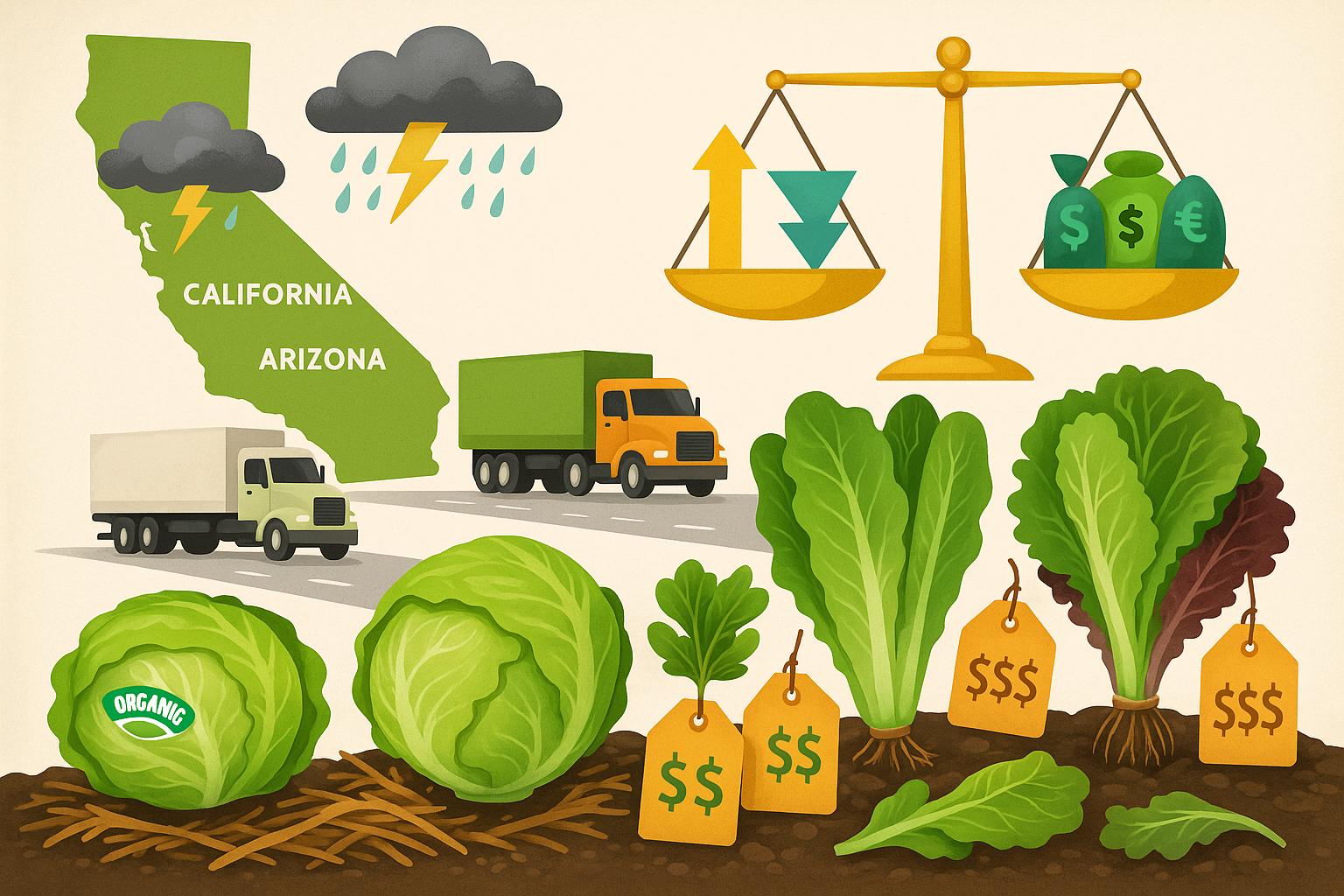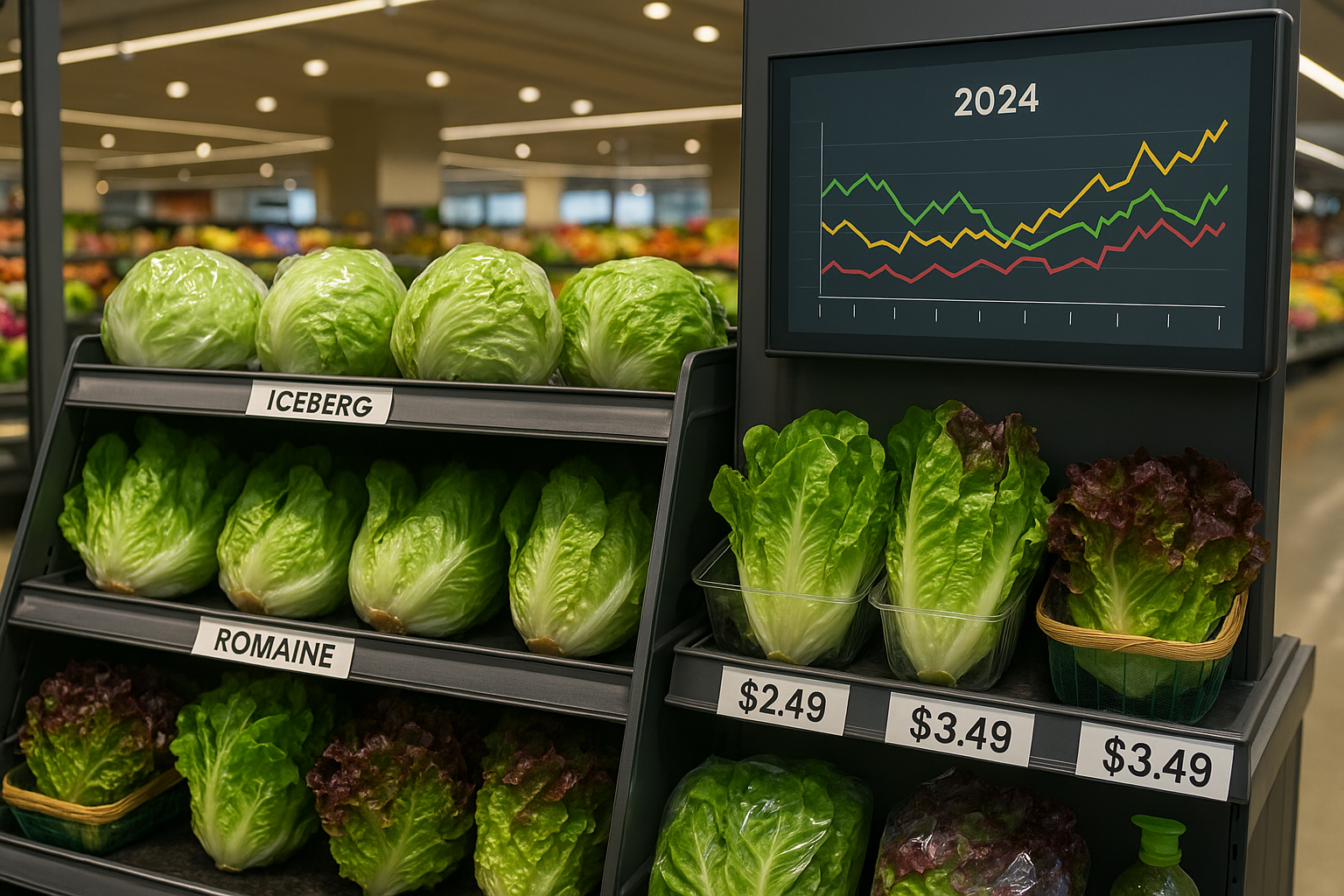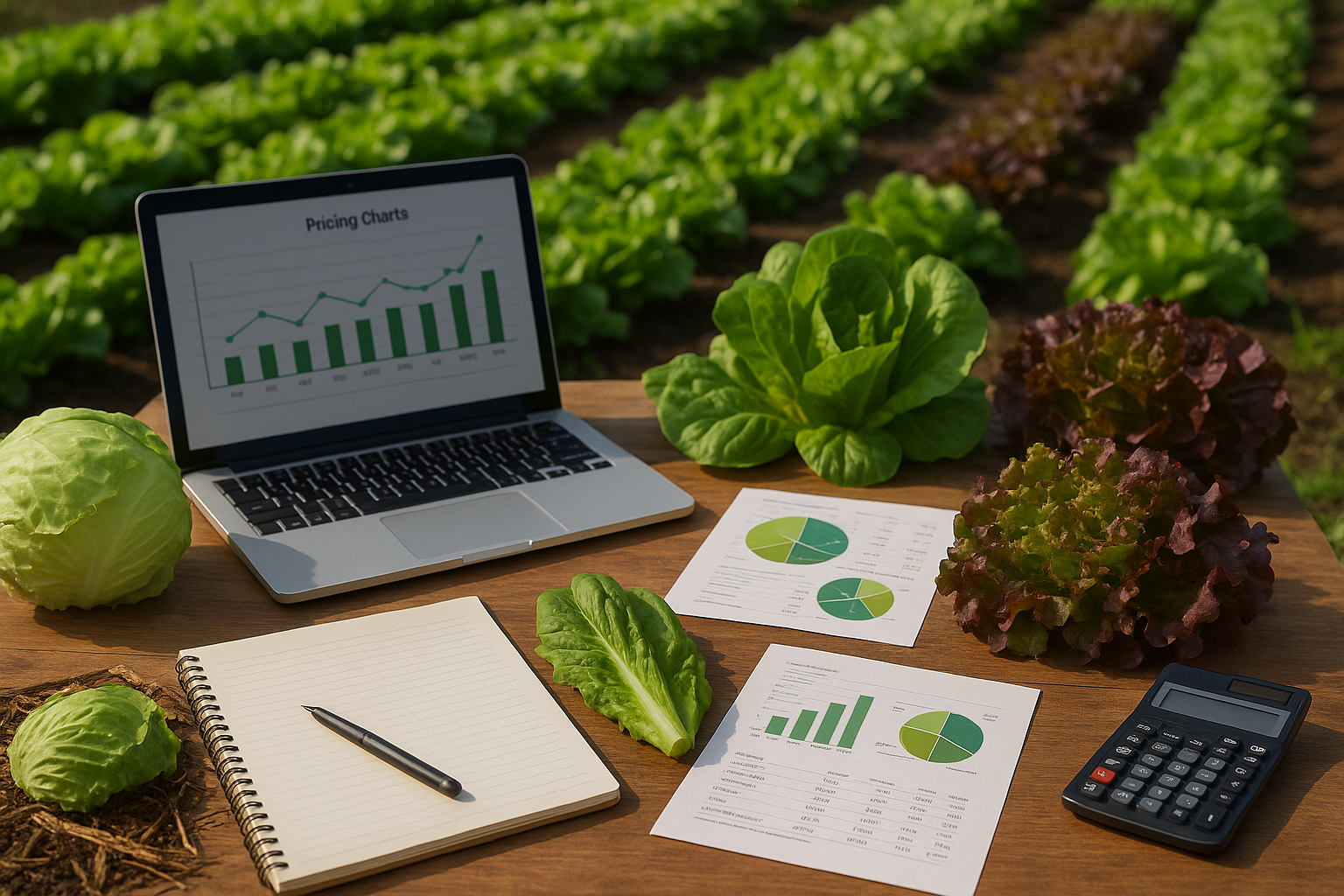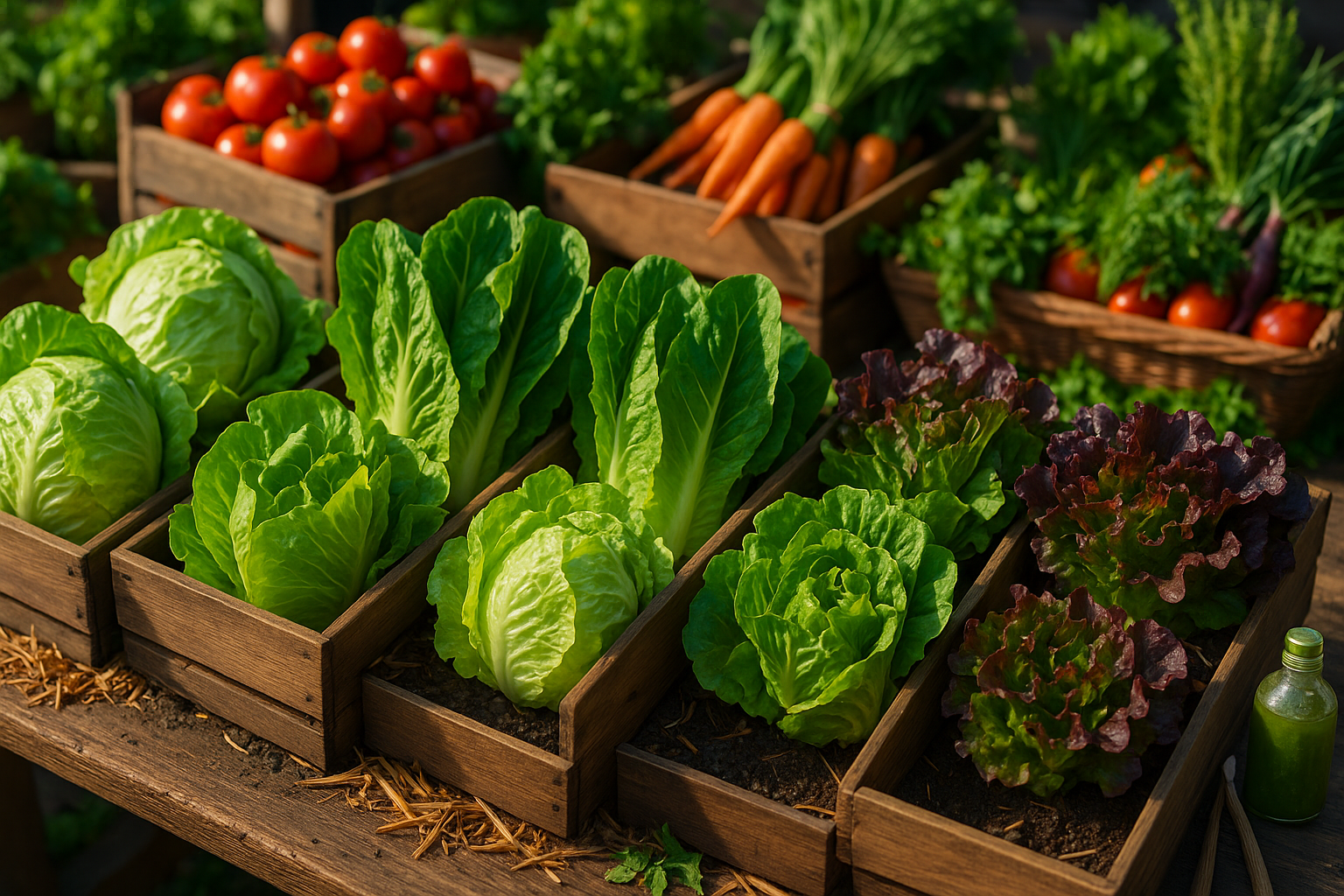Introduction to Lettuce Pricing
Lettuce pricing isn’t just a number attached to a head of greens—it’s a crucial detail that can make or break profits for growers, sellers, and even inform smarter buying decisions for shoppers. If you’re growing lettuce for farmers markets, local restaurants, or direct sales, understanding lettuce pricing ensures you’re not leaving money on the table or overpricing your product out of a sale.
For buyers, being aware of fair prices and market trends helps stretch your food budget further. Yet, the big challenge is that lettuce pricing often fluctuates, influenced by factors like seasonality—when local harvests flood the market, prices typically drop, only to spike again in winter or during droughts.
The variety of lettuce also matters; specialty types like butterhead or baby lettuce often command higher prices than iceberg. Local events, sudden boosts in demand from restaurants, or weather affecting crops in distant regions can cause rapid and sometimes unpredictable changes, too.
This article’s goal is straightforward: to guide you through the main influences behind lettuce pricing and arm you with real-world strategies—so you can accurately price lettuce for maximum profit and stay competitive, whether selling at a roadside stand or supplying a busy kitchen.
Key Factors Influencing Lettuce Prices

Lettuce prices at your local grocery store are shaped by a mix of key market factors, all of which can shift quickly and dramatically. The basic rules of supply and demand are always at play—when harvests are bountiful, prices tend to drop, but any decrease in supply, such as from a cold snap or drought, can send prices soaring overnight.
Weather is especially critical since lettuce is a delicate crop sensitive to temperature swings, floods, and pests. For instance, a major storm in California’s Salinas Valley, which grows the lion’s share of U.S. lettuce, can lead to immediate shortages nationwide.
Regional differences also matter: lettuce grown closer to market hubs usually costs less, benefiting shoppers in the West more than those on the East Coast, where shipping is pricier.
The variety of lettuce you select plays a big role in pricing too. Iceberg is generally cheaper due to its high yield and hardiness, while romaine, butter, and especially red leaf lettuce often come with a premium, reflecting both their growing challenges and consumer demand for diverse salad greens.
Organic versus conventional lettuce is another split; organic varieties cost more because of stricter farming standards, higher labor costs, and smaller yields.
Finally, transportation and logistics—things like fuel prices, refrigerated trucking, and supply chain hiccups—can tack on extra costs, especially if your lettuce is traveling cross-country.
All these factors come together to create the price tag you see, so the next time prices jump, you’ll know just how many elements are working behind the scenes to make it happen.
Where and How Lettuce is Grown and Sold
Lettuce is primarily grown in California and Arizona, which together account for over 90% of U.S. production due to their mild climates and long growing seasons. Because these states dominate the supply, weather extremes or water shortages there can quickly impact national lettuce prices and availability in grocery stores.
Beyond these major hubs, smaller farms across the country also grow lettuce, supplying their local markets and farmers’ markets—often offering fresher, sometimes organic options that may fetch higher prices.
Wholesale markets serve as large distribution points where lettuce is sold in bulk to supermarkets, institutions, and food service companies. For most shoppers, grocery retailers are the main purchase point, with supermarkets packaging and branding lettuce to appeal to health-conscious consumers.
Meanwhile, restaurants play a huge role too, buying both from wholesalers and directly from local farms, especially for specialty varieties. An increasing number of growers are embracing direct-to-consumer sales, like weekly produce boxes or online marketplaces, allowing customers to receive ultra-fresh lettuce straight from the farm.
Each channel shapes how lettuce is priced and how quickly it goes from field to fork, so being aware of these can help consumers make fresher and sometimes more affordable choices.
Current Lettuce Price Ranges and Trends (2024)

In 2024, the average price for iceberg lettuce in U.S. retail markets ranges between $1.60 and $2.20 per pound, while romaine and leaf lettuces generally sell for slightly higher prices, from $2.00 to $2.80 per pound, depending on the region and quality.
Wholesale prices have also fluctuated. Iceberg lettuce typically costs between $14 and $22 per 24-count carton, whereas romaine and leaf lettuces are usually priced from $18 to $26 per carton, according to USDA reports and major distributor listings.
Globally, prices vary based on local conditions. In Europe, retail prices average around €2.50 to €3.20 per kilogram (approximately $1.25 to $1.60 per pound). In Asian markets, imported varieties often command higher prices due to transportation costs.
Factors Influencing 2024 Price Trends
Several key factors are shaping lettuce prices this year:
- Persistent weather disruptions in California and Arizona, the primary U.S. growing regions, have caused production shortfalls and quality concerns, driving up both wholesale and retail prices.
- Unpredictable rainfall in Spain and the Netherlands has impacted European supplies, adding upward pressure on global prices.
- Ongoing supply chain challenges, including higher fuel, fertilizer, and labor costs, are pushing prices higher across distribution channels.
Price Variations by Lettuce Type and Market Channel
Romaine continues to command a premium due to its popularity in salads and food service, while leaf lettuce prices are especially sensitive to regional demand.
Market channels also affect pricing:
- Direct sales from local farmers often offer more stable prices but come with limited availability.
- Supermarkets and big retailers may pass logistics and supply risks onto consumers, resulting in higher shelf prices.
For buyers, monitoring local markets and shopping in-season at farmer’s markets can provide fresher lettuce at more competitive prices, especially during periods of price volatility.
How to Set an Effective Sale Price for Your Lettuce

Setting an effective sale price for your lettuce starts with solid market research. Visit local farmers’ markets, grocery stores, and online produce platforms to note the going prices and how quality compares to your lettuces.
Next, tally your own costs—include seeds, soil, water, labor, and packaging—to determine the minimum price you need to break even. Defining your value proposition is also key: Is your lettuce organic, fresher, or a rare variety? Highlighting these features can justify a higher price, particularly with health-conscious consumers or upscale restaurants.
When pricing, adapt your approach for different buyers:
- Direct consumers: Smaller bundles and premium pricing often work best if you emphasize freshness and local origins.
- Restaurants: They may prefer reliable volume at a modest discount—consider offering “chef bundles” or regular delivery.
- Wholesalers: They expect the lowest prices but buy in bulk. Factor in your ability to meet their volume needs and lower your unit price accordingly.
Be careful not to underprice, which can hurt your bottom line and undermine perceptions of quality, or to ignore local competition—setting your price too high may drive buyers elsewhere.
Review your prices regularly and solicit feedback from all buyer types to help you stay competitive and profitable as you grow your lettuce business.
FAQs on Lettuce Pricing and Selling
New lettuce sellers often wonder how to set prices that are both competitive and profitable. Start by researching your local market—visit supermarkets and farmers’ markets to compare retail prices.
A common markup for fresh produce is 40-50% over your cost, but factors like freshness, presentation, and location can justify a higher markup. If you’re selling organic lettuce, you can often charge a premium of 20-30% over conventional varieties, provided you clearly communicate the organic benefits to customers.
Be transparent with labeling and share your farming practices to build trust and support higher pricing.
As for how often to adjust prices, track your input costs and local market trends weekly or biweekly. Respond quickly to changes in fertilizer or packaging prices, but avoid adjusting too frequently, which can confuse or frustrate loyal customers.
Seasonal fluctuations matter too—lettuce prices often rise in the off-season and drop during peak harvest, so plan your pricing calendar accordingly.
Finally, don’t hesitate to seek feedback from buyers. Asking what they’re willing to pay or what factors influence their purchasing decisions can help you refine your strategy and optimize both customer satisfaction and profitability.
